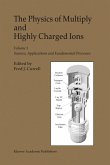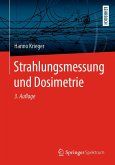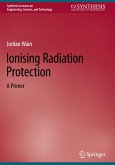This book gives a detailed discussion of the initial enthusiasm triggered by the discovery of x-rays and radioactive radiation which later turned into fear and repulsion in a significant part of the global population up to the 21st century.
After a historical review, the author discusses the effect of ionizing radiation on living cells, tissues and organisms. He then describes the relationship between the dose of radiation and the effect it produces. He shows how the dose-effect dependence is measured and what models of describing such dependences are used. He also discusses how radiation acts on living organisms: disorders in the genetic apparatus, mutation formation and so on. The book also includes detailed descriptions of the results of numerous health studies of large groups of people who, for one reason or another, were exposed to low doses of ionizing radiation, including those that significantly exceed the natural radiation background.
The author concludes that low doses of radiation are safe and can even be beneficial (as known from medical radiation treatment); and also that the natural radiation background is necessary for the normal growth and development and well-being of a living organism. The author also discusses cases and effects of large doses, arguing, however, that dangerous doses of radiation are very unlikely.
This book challenges radio-phobia. It not only offers arguments helping to overcome an unreasonable fear but, based on the latest understanding of science, argues to gradually move back, not to the former radio-euphoria, but to a new, conscious attitude towards radiation.
After a historical review, the author discusses the effect of ionizing radiation on living cells, tissues and organisms. He then describes the relationship between the dose of radiation and the effect it produces. He shows how the dose-effect dependence is measured and what models of describing such dependences are used. He also discusses how radiation acts on living organisms: disorders in the genetic apparatus, mutation formation and so on. The book also includes detailed descriptions of the results of numerous health studies of large groups of people who, for one reason or another, were exposed to low doses of ionizing radiation, including those that significantly exceed the natural radiation background.
The author concludes that low doses of radiation are safe and can even be beneficial (as known from medical radiation treatment); and also that the natural radiation background is necessary for the normal growth and development and well-being of a living organism. The author also discusses cases and effects of large doses, arguing, however, that dangerous doses of radiation are very unlikely.
This book challenges radio-phobia. It not only offers arguments helping to overcome an unreasonable fear but, based on the latest understanding of science, argues to gradually move back, not to the former radio-euphoria, but to a new, conscious attitude towards radiation.








